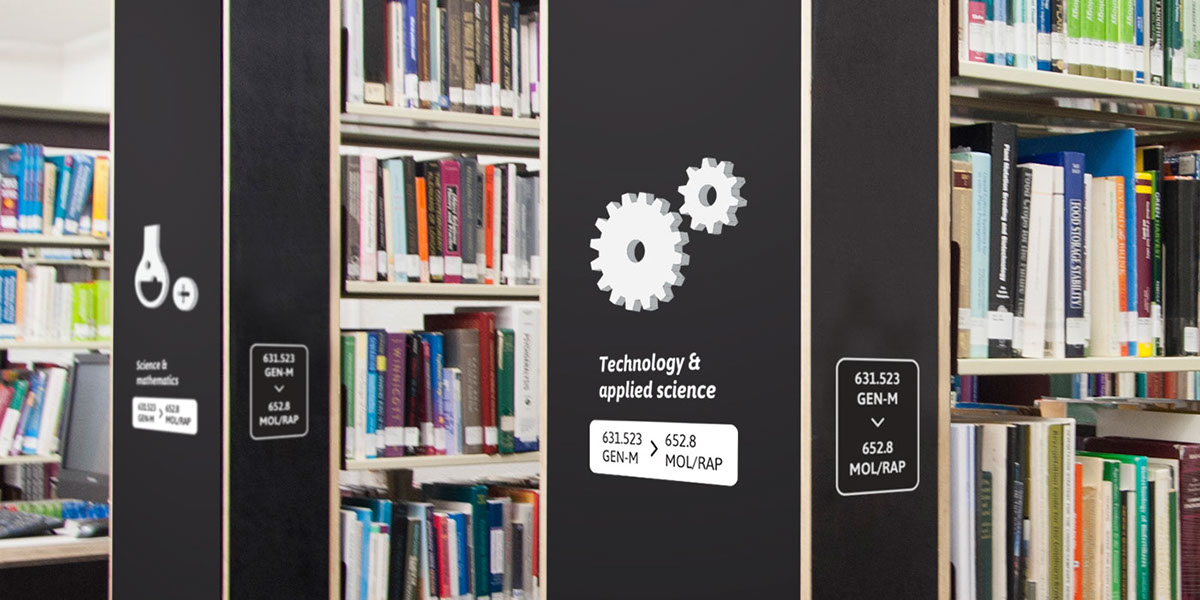Augmented Reality
Description of Wayfinding Technology
This section of the report will cover:
- Wayfinding technology and its characteristics
- Recent developments and trends within Wayfinding & AR technology
What is Wayfinding?
- Wayfinding technology can be used as a digital information tool that can assist in guiding library patrons and navigate their way within a physical library environment.
- Wayfinding utilises physical symbols, signage, and maps to assist patrons in navigating their way around an environment with the assistance of mobile or handheld technologies.
Wayfinding is an important tool that has been adopted by several industries, ranging from healthcare, transport sector, and university environments. Wayfinding uses signage, like traditional signs and symbols. Wayfinding visuals can display content in the library, allowing users to interact with their mobile or devices.

Mobile Phones & Wayfinding
As the ubiquity of smart phones grows, it is important to utilise mobile phone and handheld technologies. Present and emerging mobile phone technologies can support engagement within their environments, due to their portability and accessibility. [1]
Indoor mapping features are a solution to assist patrons in navigating their way within the library environment. This is also particularly important in addressing library patrons from lower socioeconomic status, who primarily rely on their phones as a means to access the internet [2]. It is important that the Dewey Library begins to address the importance of using Wayfinding technologies.
Why Wayfinding?
- Wayfinding contributes to a user-centred service design.
- It is a system that can enhance and improve patrons' understanding of the materials and collections kept within the library.
- Can enhance their understanding of the services that Dewey Library offers.
- Patrons are able to conduct a catalogue search from their own mobile or handheld device (tablet, phone, etc.) and are then guided by the Wayfinding technology to the location of a material, book or room within the library.

Benefits of Wayfinding for the Dewey Library Environment:
- Wayfinding contributes to creating a sense of confidence within the user
- Creates a sense of independence and simplifies the user experience
- Improves the user experience
Recent Developments and emerging trends within Wayfinding Technology:
Bluetooth devices and cellular Wi-Fi technologies have been expanding immensely in relation to Wayfinding technology. Augmented reality and wayfinding technologies are being expanded into 3D models and mapping systems. These new and emerging technologies will have profound implications for the future of AR and Wayfinding technologies in our rapidly changing world, and implications for the future of libraries and information searching environments.
The Future for AR & Wayfinding Technology
Tango

Tango (also known as “Project Tango”), allows mobile devices to detect and understand their position without the need for geolocation of other physical tools.
ARCore

ARCore is another current technological advancement emerging with the AR world. It is a software which assists in supporting the mobile or hand held device to detect physical locations and surfaces (for example, a table or a chair).
User Needs: A Scenario
Consider the following hypothetical scenario. A high school student is studying for a school project for a history class, and is looking for texts on a project concerning World War II. However, the student is not familiar with the Dewey Library environment. The student may not be aware that Dewey library holds a vast collection of digital and audio visual materials directly relating to her project. Wayfinding technology can support the student by providing her with a platform tool that can assist in navigating her way to the correct section to locate a particular material.
The Importance of Adopting Wayfinding Technology
Wayfinding technology is important to invest in. Studies continue to reveal that students are unlikely to seek out information from librarians or library specialists when it comes to seeking materials [3].
Based on this assumption, we assume that the library patrons that may attend Dewey Library are also likewise unlikely to seek help from library technicians to assist in search and retrieval processes. Therefore, it is worthwhile for Dewey Library to invest in Wayfinding technologies.
Recommendations for Wayfinding Technology
Prior to adopting and committing to purchasing any technology, we recommend that Dewey Library conduct:
- Trial and test the Wayfinding technology. Testing the displays and resolution on different devices and software (e.g., apple products, Microsoft products)
- Testing mapping and location systems, with the aid of physical signage and physical materials within the library
- Ask patrons for feedback and suggestions regarding the technology. Alternatively, use Dewey library staff to trial different scenarios and act as library patrons.
Accessibility
We advise Dewey Library that all decisions and discussions on adopting Wayfinding systems place the user and the user experience at the forefront.
It is important that the Wayfinding technology Dewey Library adopts is suited to the user's needs. Therefore, it is significant to consider technologies that can cater to a wide array of user needs and user’s ability to interact with technologies. Furthermore, new and emerging interactive methods of wayfinding technology are being developed that allow users to bypass the needs of using the traditional keyboard.